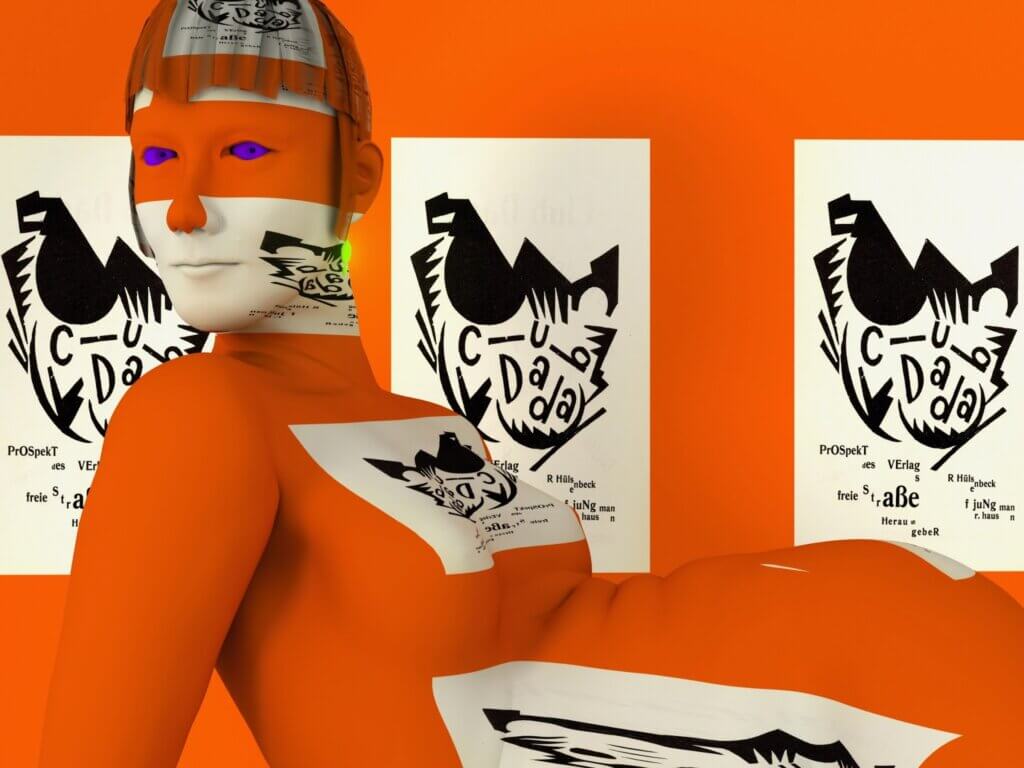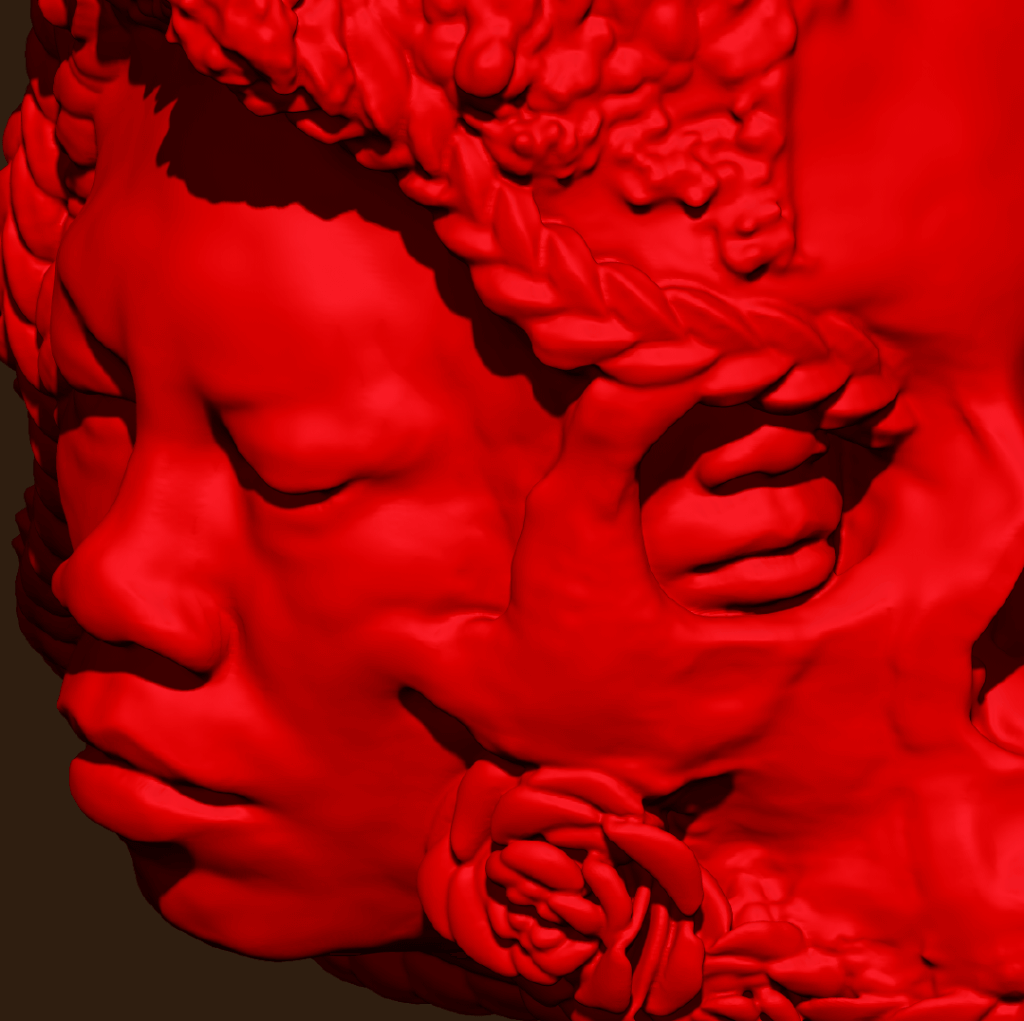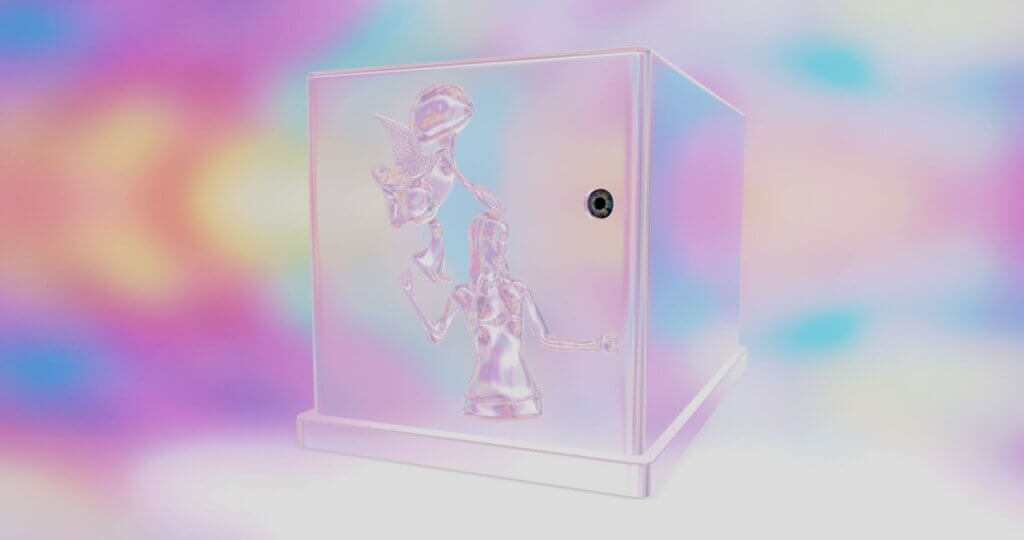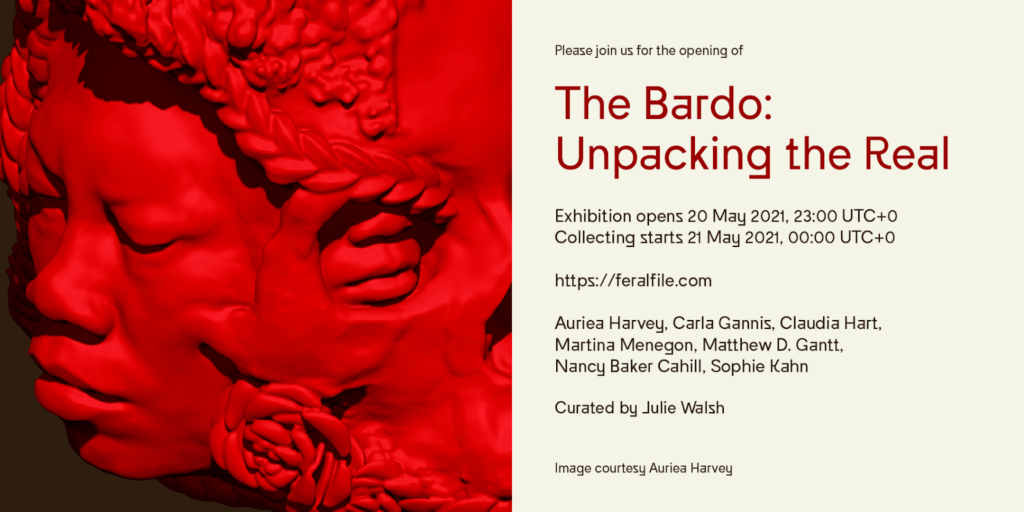
*Claudia Hart. Kiki.object (2017) screen grab #1. Digital Sculpture. Image courtesy of the artist and Feral File.
The Bardo: Unpacking the Real
NFT and digital sculpture exhibition curated by Julie Walsh
VIP Preview: Wednesday, May 19, 2021
Exhibition Opening: May 20, 2021 7pm EDT / 4pm PDT
Collecting Begins at 8pm EDT (NFT Edition Availability Launches)
On behalf of Feral File, Bitmark, and international curator Julie Walsh, I am pleased to invite you to join us for the opening of The Bardo: Unpacking the Real, the first exhibition curated in direct response to the recent market boom and “ownership” of NFTs. The exhibition will feature new digital sculptures by a group of seven artists from around the world: Auriea Harvey, Carla Gannis, Claudia Hart, Martina Menegon, Matthew Gantt, Nancy Baker Cahill, and Sophie Kahn.
Please join us for an exclusive live VIP preview alongside many of the artists on May 19, a day before the exhibition officially opens to the public on Feral File.
RSVP to feralfile@culturalcounsel.com for more information.
Artwork Preview:

Above: Auriea Harvey. The Mystery [v5-dv1]. 3D model. Digital sculpture: OBJ, GLB, STL, USDZ, DAE, FBX, X3D, TXT, web browser, iOS, Android, Linux, Windows, Mac. Image courtesy of the artist and Feral File.
Created as a talisman to help us refocus on what matters most in our lives, Auriea Harvey’s “The Mystery [v5-dv1]” is a digital sculpture that also serves as a memento mori—a type of still-life from Western art history that is a reminder of both beauty and death. The discrete images that make up “The Mystery [v5-dv1]” can be seen as symbolic; for example a skull (bone), a face (nature), a rose (beauty), and a braid (death). The composite image of the sculpture rotates in a timeless way, as if it is waiting for the viewer to “use” the object (which may be digitally printed by the collector) to give it a new life. Multiple file formats also allow the purchaser to make use of the sculpture in the ways that feel most meaningful to them. Notably, Harvey’s work is a form of self-portrait; she has used her own face as a basis for the sculpture, thereby inserting the face of an African-American woman into an art historical narrative dominated for centuries by white men, thus updating sculpture both digitally and socially.
Claudia Hart — Kiki.object (Pictured At Top)
When Claudia Hart was asked to join the Feral File “sculpture show,” she took a quantum leap, initiating a discussion with the artists and curator about NFTs, the real and (un)real, and questions of ownership and authenticity. Ultimately, her contribution to the show deconstructs that which is known by reconstructing the image of Kiki de Montparnasse, Man Ray’s muse and a true Dada icon. Hart, always a rebel against the tech bros, takes Kiki and breaks her neck. When Kiki gazes at the viewer it is in a seductive defiance, haunting us in a visceral way. Hart’s simulation will leave viewers stunned with its rich sensuality, the oddity of Kiki’s gaze, and Hart’s multi-layered use of technology—all of which combine to assure the collector that to gaze at Kiki is to catch a glimpse of the infinite possibilities of kindred spirits across the vast canon of art history.
Carla Gannis – peep-o-rama

Carla Gannis. peep-o-rama. 2021. Image courtesy of the artist and Feral File.
For the exhibition artist Carla Gannis will present “peep-o-rama,” a new digital sculpture that examines what it has meant to gaze at a sculpture throughout the canon of art history. Inspired by one of Gannis’ vivid dreams, the piece was further informed by the Samuel van Hoogstraten (1627–1678) peep box show at the National Gallery in London. To create the colors and forms in the peep box backgrounds, she trained an AI using images from Times Square pornographic peepshows (for the colors), and images from Dutch painting (for the forms). Once a collector purchases Gannis’ work, the mystery of the peep box’s contents is revealed through a variety of unique experiences, including a view modeled after one of Hoogstraten’s works, a single-person VR view (which allows you to visit the inside the peep box itself), and a social VR version where you can hang out with your friends in a space-age bachelorette pad. The peep box sculpture addresses such serious topics as gender and body politics in art history, the idea of public and private ownership of data, and how technology challenges the very notion of seeing.
Julie Walsh on curating The Bardo:

“When I first began to conceptualize this exhibition of digital art, I had quite a different idea of the real and the (un)real. My idea was to curate a digital sculpture show in which each artwork would receive a unique NFT and be sold. During the last month as a result of the absurd media hype given to NFTs and digital art, I reflected more deeply on how to create a show with the depth and substance that truly resonates with each artist’s “absolute reality.” The explosion of sudden interest in NFTs seemed dreamlike to me and unreal. The show needed a conceptual reboot. Thus, I reflected on the most liminal state of being I could think of—the Bardo. In the Bardo, we each have the opportunity to choose what we believe is real or (un)real. Similarly, one can choose to think about whether digital art is real or not. With questions like this the artists and I reconceptualized the show as a digital sculpture show where the concept of what and how NFTs are used would become central to the creation and thinking behind the work. It was a conceptual leap the artists were eager to explore. Don’t just show your digital art in Feral File; figure out how the NFTs can be more like a medium to be explored. I decided to think of using NFTs in the conception of the artwork as being closer in nature to a site-specific installation, using Feral File as the site.”
Full curatorial statement available on request. Please contact marcella@culturalcounsel.com for further information, or to receive an invite to our VIP preview.
About Feral File
Feral File is a space for the new media community to co-create the future of art making, exhibiting, and collecting. Led by artist Casey Reas in partnership with Bitmark, a company working to restore trust in the Internet, Feral File is an optimistic undertaking. By partnering with artists and curators to establish transparent protocols for exhibiting and collecting file-based art, Feral File is developing a more expansive view of what’s possible—and bringing it to life. Feral File is evolving out of the art gallery, online marketplace, and digital publisher models. The Bardo: Unpacking the Real follows Feral File’s inaugural exhibition Social Codes, an exhibition of software art, which is also known as generative art. The exhibition is comprised of code written by artists to create visual experiences.
PRESS CONTACT
Marcella Zimmermann
Vice President, Cultural Counsel